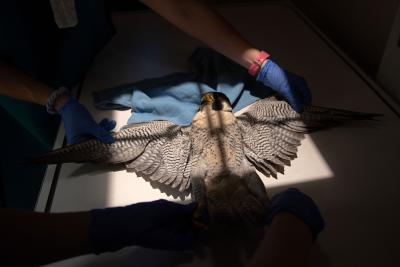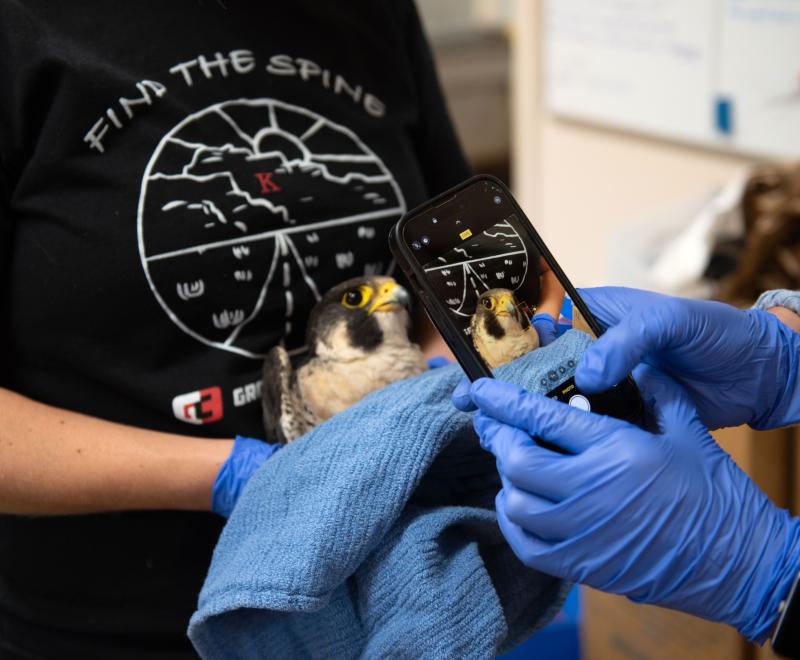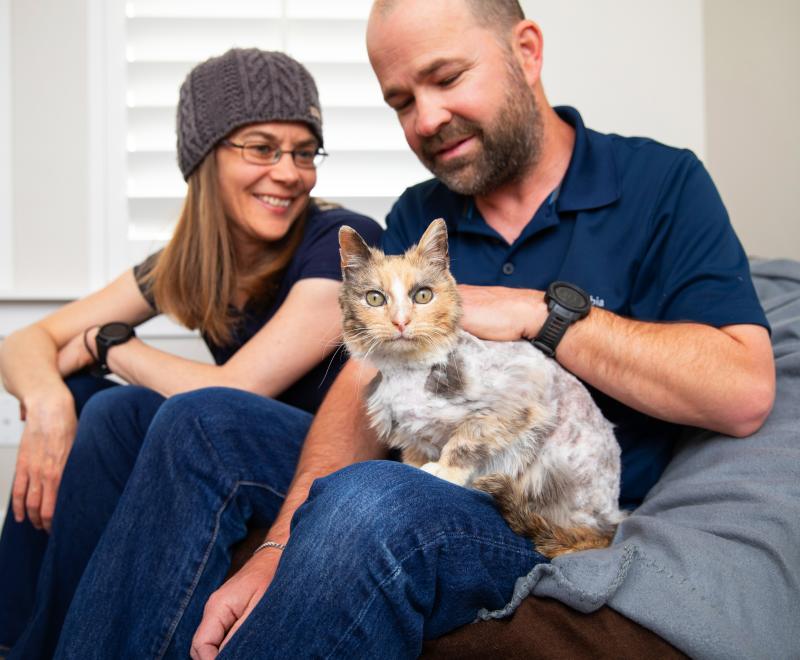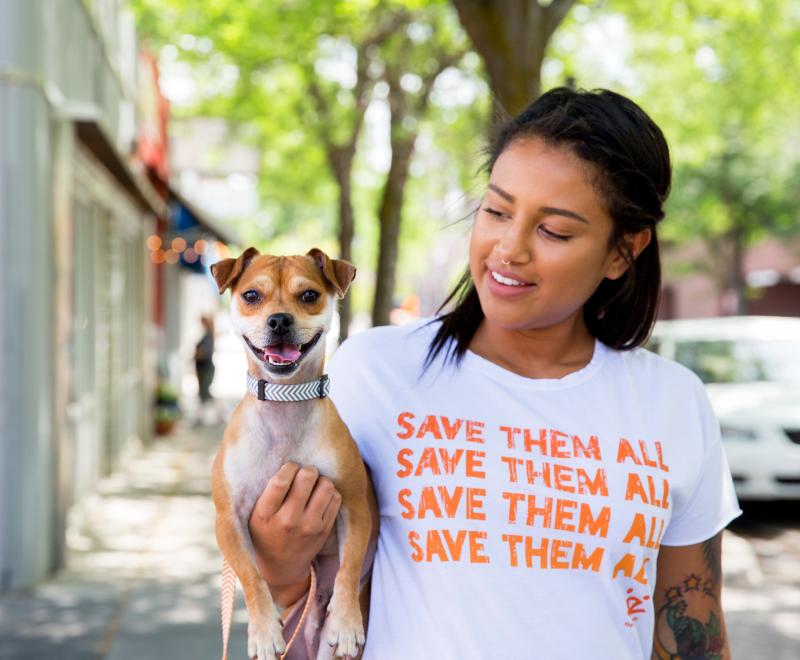Healing the fastest animal on Earth

When a peregrine falcon was found grounded near a restaurant a few miles from Best Friends Animal Sanctuary in Kanab, Utah, the scene was all wrong. This bird — built for speed, born to soar — was huddled amid asphalt and exhaust instead of high cliffs and open skies. He had a broken wing and a chipped beak that spoke of an impact that no creature, even one as fierce as a falcon, walks away from easily.
Peregrine falcons are known for their astonishing hunting dives — swooping from the sky at more than 200 miles per hour. (For reference, the fastest land animal, the cheetah, can run up to around 75 miles per hour.) But that same breathtaking velocity leaves little margin for error. One miscalculation can ground even the most skilled flyer.
A restless recovery
Seeing that he needed help — and fast — some restaurant staff members brought the raptor to Wild Friends, Best Friends’ state- and federally licensed wildlife rehab center.
Like most wild animals, he didn’t understand that people were trying to help. Restless and wired with energy, he paced and fidgeted — not ideal for a healing wing. The Wild Friends team tried a wrap to keep the wing still, but he fussed with it until he finally pulled it off.
[Miraculous recovery for injured osprey]
Fortunately, birds like him have high metabolisms and hollow bones — light as reeds, tough as steel — and the Best Friends veterinary team determined that, with time, his wing would likely set on its own. His beak, too, would heal as the damaged portion naturally grew out. Rather than risk further stress or injury with another wrap, they let the small enclosure do the work, gently limiting his movement and giving his body the stillness it needed to heal.
Even with all his restless energy, healing came quickly. With pain meds and anti-inflammatories on board, the mending began. X-rays soon showed calluses forming around the break — a promising sign that his wing was doing exactly what wings are meant to do: stay strong and hold together.

Racing the wind
Soon, it was time for the next step: an outdoor aviary. Wild Friends staff gave him space — first a modest outdoor aviary, then a large flight enclosure — where he could stretch and strengthen. Just a few months after arriving, he was diving, banking, soaring — every move a ballet of balance and muscle.
[Eagle displaced by wildfire on road back to the skies]
And then one day, he was ready. Staff opened the aviary doors, and the sky welcomed him back. No dramatic pause. No backward glance. Just a blur of feathers soaring with the wind.
His recovery wasn’t easy, and it wasn’t calm. But it was his. And it was wild in all the right ways.
Let's make every shelter and every community no-kill in 2025
Our goal at Best Friends is to support all animal shelters in the U.S. in reaching no-kill in 2025. No-kill means saving every dog and cat in a shelter who can be saved, accounting for community safety and good quality of life for pets.
Shelter staff can’t do it alone. Saving animals in shelters is everyone’s responsibility, and it takes support and participation from the community. No-kill is possible when we work together thoughtfully, honestly, and collaboratively.






